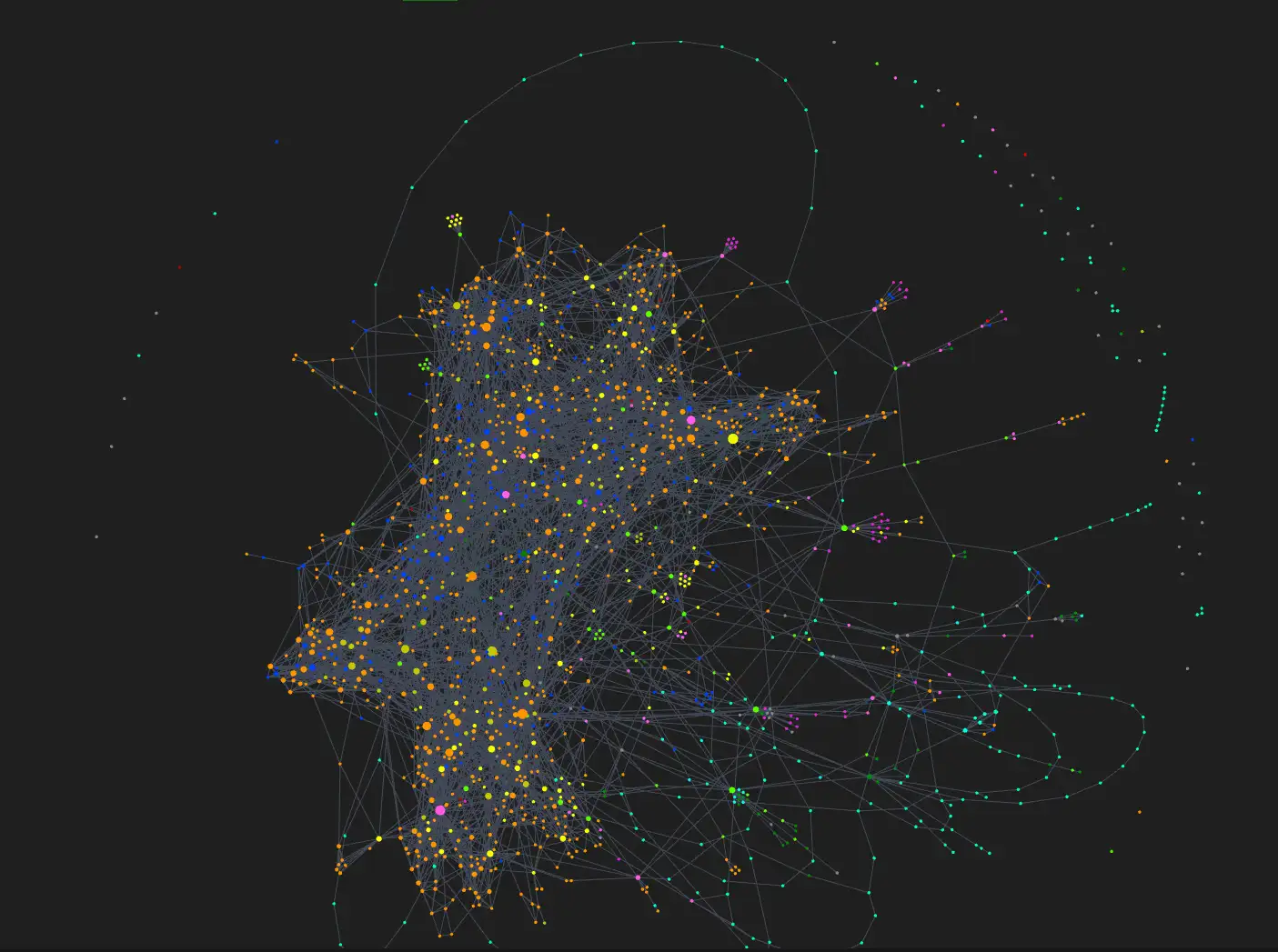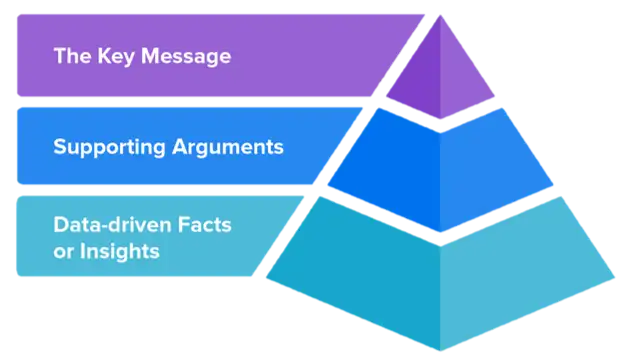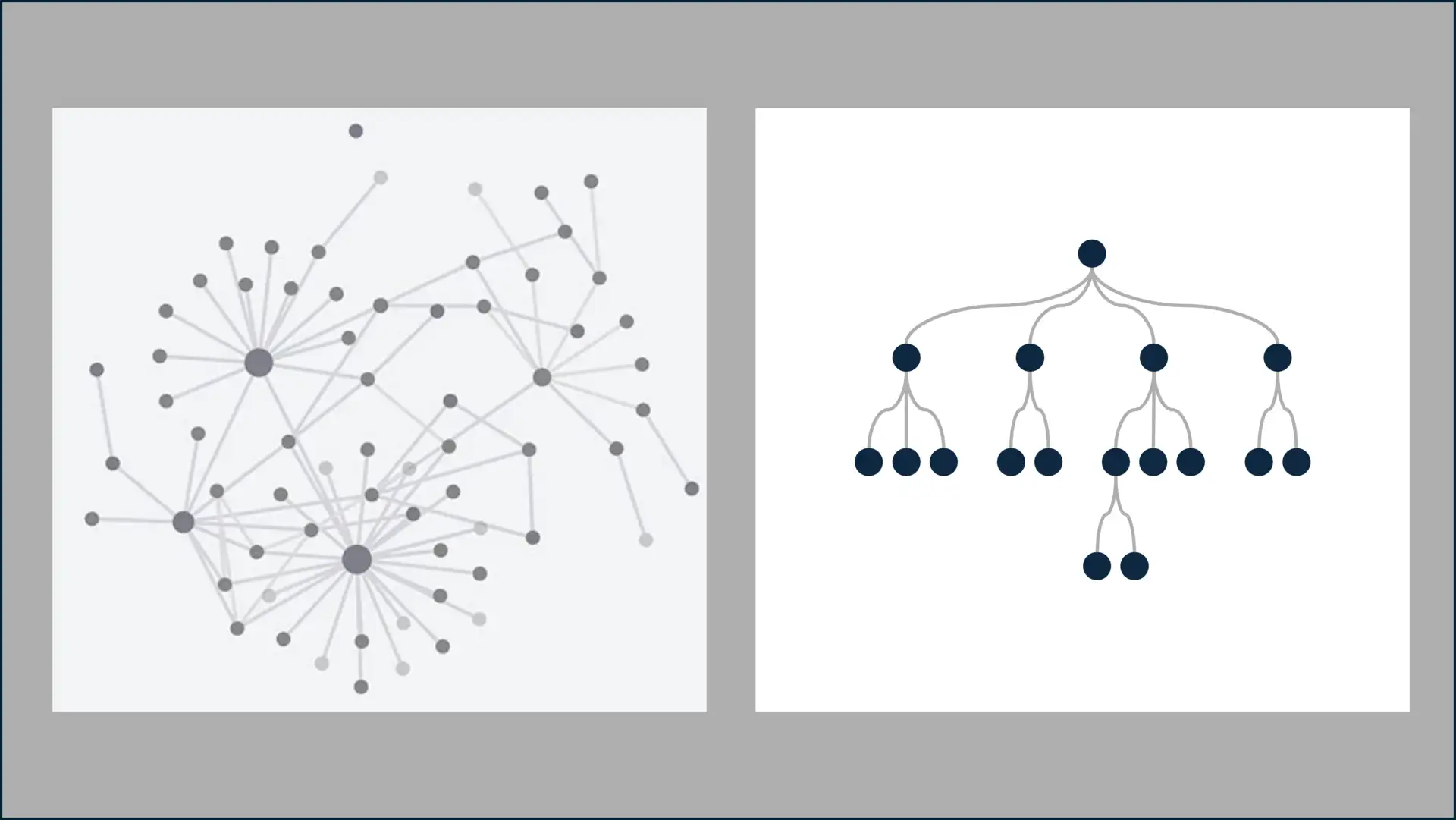The Promise and Problem of Modern Knowledge Management Systems
How Obsidian, Roam Research, and Notion Changed Note Taking
Traditional note-taking was linear and isolated. You wrote notes in notebooks or documents, and finding connections between ideas required manual searching and cross-referencing. Then came the revolution: Obsidian, Roam Research, Notion, Logseq, and RemNote introduced bidirectional links that automatically connect related concepts across your entire knowledge base.
These tools transformed note-taking from a static activity into a dynamic web of interconnected thoughts. Simply by typing [[concept]] in your notes, you create instant connections that work both ways. When you're reading about photosynthesis, you can instantly jump to your notes on cellular respiration, and vice versa. The promise was intoxicating: your notes would become a living extension of your mind.
The Promise of Knowledge Graphs and Bidirectional Links
The marketing materials show stunning visualizations: knowledge graphs with nodes and connections spreading like constellations across your screen. Clusters of related concepts emerge organically, and the tools promise that these visual representations will reveal hidden patterns in your thinking. You'll supposedly discover unexpected connections between disparate fields, leading to breakthrough insights and accelerated learning.

The underlying philosophy is appealing: knowledge isn't hierarchical but networked. Ideas connect in multiple directions, and the best way to mirror this complexity is through bidirectional linking systems that make no assumptions about the nature of connections. Let the structure emerge naturally, proponents argue, and you'll build a more authentic representation of how knowledge actually works.
The Visual Illusion: When Knowledge Graphs Look Better Than They Work
But here's the uncomfortable truth: those beautiful knowledge graphs often create an illusion of understanding without substance. The visual complexity can be impressive, but complexity isn't the same as utility. Many users find themselves spending more time managing their graph than actually learning from it.
The problem with "neutral" bidirectional links is that they treat all connections as equal. A link from "photosynthesis" to "chlorophyll" carries the same weight as a link from "photosynthesis" to "climate change." But these connections serve entirely different purposes: one describes a component relationship, the other an impact relationship. Without this distinction, the web of connections becomes noise rather than signal.
How Our Brains Actually Process Information: The Case for Structured Note Taking
Human cognition doesn't work like a random network of associations. Our brains process information hierarchically, moving from general concepts to specific details, building understanding through structured relationships. When we learn something new, we don't just create random connections—we organize information into categories, understand cause-and-effect relationships, and build mental models with clear structures.
Consider how you understand a well-written book. The author doesn't present ideas randomly, hoping you'll discover connections. Instead, they build arguments hierarchically: main themes supported by key points, key points illustrated with specific examples, and examples that reinforce the overall message. This structure isn't arbitrary—it mirrors how our minds naturally organize and retain information.
From Luhmann's Zettelkasten to Modern Slip Box Methods
The Original Zettelkasten System vs Today's Bidirectional Linking
The modern fascination with connected notes often references Niklas Luhmann's famous Zettelkasten, or slip box system. Luhmann, a prolific German sociologist, used a physical system of index cards to write over 70 books and 400 articles. His system has become legendary among knowledge workers, often cited as proof that networked thinking produces extraordinary results.
But modern digital interpretations of the Zettelkasten often miss crucial elements of Luhmann's original system. While Luhmann did create connections between cards, these connections weren't arbitrary. He used a sophisticated numbering system that created branching hierarchies of ideas, with clear relationships between parent concepts and their subdivisions.
Why Luhmann's Slip Box Actually Used Hierarchical Principles
Luhmann's numbering system wasn't just organizational—it was conceptual. Card 1 might introduce a broad topic, 1a would develop a specific aspect, 1a1 would drill down further, and 1a1a would add a particular example or counterargument. This created a tree-like structure where the position of each card indicated its relationship to other ideas.
When Luhmann created cross-references between distant parts of his system, he wasn't making random connections. He was linking structured arguments to other structured arguments, creating a web of hierarchical reasoning rather than flat associations. The power of his system came not from the connections themselves, but from the thoughtful organization that made those connections meaningful.
Hierarchical Note Taking: A Better Approach to Note Organization Techniques
Note Connection Types That Mirror Human Thinking
Effective hierarchical note taking recognizes that not all connections are created equal. Instead of treating every link as bidirectional and neutral, it categorizes relationships based on their logical function. A parent-child relationship indicates that one concept is a subset or specific instance of another. A supporting relationship shows that one idea provides evidence for another. An opposing relationship highlights conceptual tensions or contradictions.

These connection types aren't arbitrary categories—they reflect how we naturally think about relationships between ideas. When you read that "photosynthesis converts sunlight into chemical energy," you're not just connecting two concepts randomly. You're understanding a process relationship where one thing transforms into another under specific conditions.
By making these relationship types explicit in your notes, you create a system that aligns with natural cognitive patterns. Your notes become more than just linked information—they become structured arguments that you can follow, evaluate, and build upon.
Learning Through Note Structure: Why Hierarchy Beats Random Links
Hierarchical note structures offer several advantages for learning that flat networks can't match. First, they make complete arguments visible. When you organize your notes about a topic hierarchically, you can see the main claim, the supporting evidence, and the logical flow from premises to conclusion. This visibility helps you identify gaps in your understanding and areas that need further research.
Second, hierarchical structures aid memory retention. Our brains are exceptionally good at remembering information that fits into organized patterns. When your notes reflect these patterns, you're not just storing information—you're building mental scaffolding that makes future recall easier and more reliable.
Third, hierarchical organization enables productive constraints. When you know that one idea should logically support another, you can't just throw concepts together randomly. You have to think carefully about how ideas relate, which forces deeper engagement with the material and leads to better understanding.
From Theory to Practice: The Evolution of Note Taking Methods
Evolving Your Obsidian Linking Strategies for Better Learning
The transition from bidirectional to hierarchical linking doesn't require abandoning your current tools. Apps like Obsidian, Roam Research, and Notion can support hierarchical thinking—you just need to use them differently. Instead of creating links impulsively, start asking yourself: what type of relationship am I establishing?
When you create a link, specify the relationship type. Use consistent naming conventions that indicate hierarchy: "Child of," "Supports," "Contradicts," "Example of." You might use tags, prefixes, or dedicated relationship properties to make these connections explicit. The key is moving beyond the simple [[ ]] link to create meaningful, categorized relationships.
Consider organizing your notes into argument maps rather than topic clusters. Instead of having a general note about "climate change" with dozens of random connections, create a structured argument about specific climate-related claims. Start with your main thesis, identify the supporting arguments, and then connect specific pieces of evidence to each supporting point.
Step-by-Step Guide to Structured Note Organization and Knowledge Building Methods
Begin by identifying the main arguments or themes in the material you're studying. These become your top-level notes—the parents in your hierarchical structure. For each main argument, create child notes that represent the key supporting points. Then, create grandchild notes for specific evidence, examples, or counterarguments.
As you build this structure, pay attention to the logical relationships between levels. Each child note should clearly support, extend, or qualify its parent. If you find a note that doesn't fit this pattern, consider whether it belongs in a different part of your hierarchy or whether it reveals a gap in your understanding.
Don't abandon cross-references entirely, but make them purposeful. When you link between different branches of your hierarchy, specify why you're making the connection. Are you showing that two different arguments support the same conclusion? Are you highlighting a contradiction that needs resolution? These purposeful connections become much more valuable than random associations.
The Synthesis: Bidirectional Links and Hierarchical Links Aren't Contradictory
The choice between bidirectional and hierarchical linking isn't binary. In fact, they can work together in a complementary way. Bidirectional links serve as "unspecified" connections—initial intuitions about relationships that haven't been fully developed. They're the raw material of thought, the hunches and associations that deserve further exploration.
The key is treating bidirectional links as a starting point, not an end point. When you create a simple link between two concepts, you're identifying a potential relationship that needs clarification. The next step is to specify that relationship: What type of connection is this? What direction does the logical flow follow? How does this connection serve your broader understanding?
This evolutionary approach respects both the spontaneous nature of insight and the structured nature of understanding. You can capture connections as they occur to you, but you don't stop there. You develop those connections into explicit, hierarchical relationships that support learning and knowledge building.
By combining the flexibility of bidirectional linking with the clarity of hierarchical organization, you create a note-taking system that matches how your mind actually works. You get the best of both worlds: the ability to capture connections quickly and the structure needed to build lasting understanding.
The future of effective note-taking isn't about choosing between connection types—it's about understanding when and how to use each one. Start with bidirectional links to capture your initial thoughts, then evolve them into hierarchical structures that support real learning. Your notes will become more than just information storage—they'll become thinking tools that help you develop ideas, build arguments, and create new knowledge.
